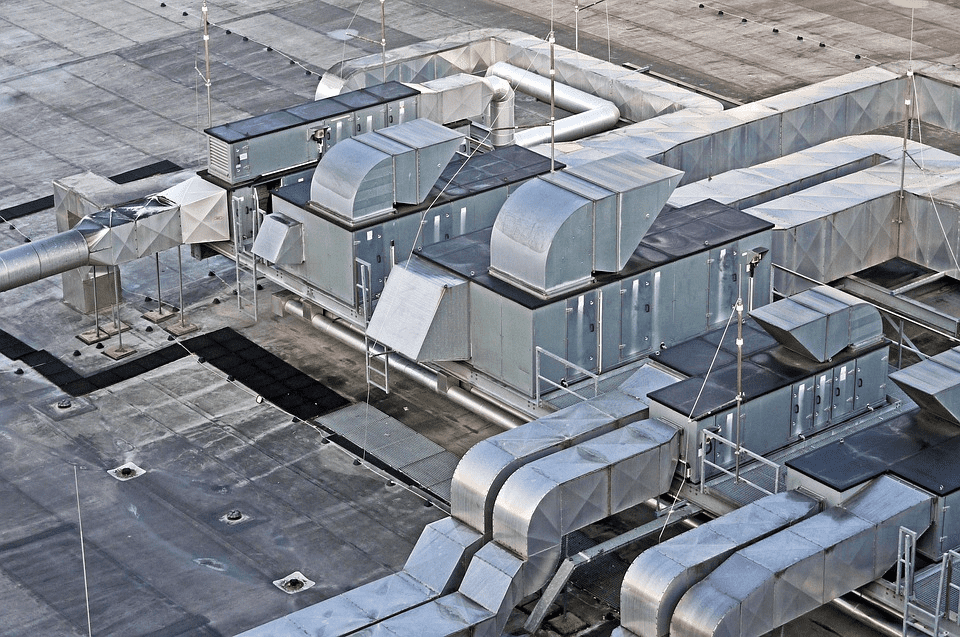What is the California Mechanical Code?
Photo: PixabayThe California mechanical code is one of the key Building Standards recognized by the California Building Standards Commission 2016. It...
Floor, wall and ceiling mounted to meet your unique project design.
When it comes to any new building or renovation project, it's vital to ensure your project meets all building code requirements. Understanding every code for every project can get overwhelming, but when it comes to HVAC building codes, we can help. Below is your guide to understanding the California HVAC building code.
While there are two building codes, California Green Building Standards Code (CalGreen) and Title 24 for air distribution systems, Title 24 is the most important for HVAC systems.
Title 24 has a straightforward goal: improve energy efficiency standards throughout the state of California for commercial and residential buildings. For California Title 24 commercial HVAC requirements and California Title 24 residential HVAC requirements, you will have to focus on:
|
You Can Save 30% on Energy Costs Just Like That Contact an HVAC expert today and find out how you can make your next building more energy-efficient |
According to the Annual Energy Outlook 2020 by the US Energy Information Administration (EIA), a staggering 94% of delivered energy was used for air conditioning, and 34% was used for heating in 2019 (nation-wide).
To combat California's energy consumption, Title 24 has been implemented across the state for both residential and commercial buildings planning to use HVAC systems.
There are three main areas to address in any ongoing or upcoming HVAC projects to ensure compliance with Title 24:
Since improper insulation can result in unnecessary air leakage, several mandatory measures are required to ensure a building’s energy efficiency. Under Title 24’s energy standards, all HVAC ductwork and plenum boxes must be adequately sealed and insulated.
To pass inspection, leakage must adhere to the Home Energy Rating System (HERS) with an insulating value of R-8 or R-11, depending on your climate zone.
Unlike the 2008 Title 24 requirements, these prescriptive requirements cannot be waived by using a performance method of compliance: all duct testing must be HERS tested for leakage in all climate zones.
The only exception is if the duct system is entirely enclosed in a conditioned space, so any air leakage is still heating or cooling the room as needed. Additional duct installation standards include:

Title 24 does not have a set standard for heating ventilation and air conditioning equipment sizes; however, it stipulates that you must adequately calculate your project's heating and cooling load.
Improperly sized equipment operates less efficiently and can cause degradation issues in time due to a constant on-off cycle of the system.
When equipment is sized correctly, the HVAC should maintain a comfortable atmosphere without excessively cycling from hot to cold to keep temperatures steady.
Automatic setback thermostats or programmable/smart thermostats aren't only convenient, they're a requirement with Title 24. Occupants of a commercial building or residence can set the thermostat system to lower energy consumption when no one is in the building, only to have the building cooled or heated to specified temperatures before anyone arrives.
While there is no requirement for an occupant to use the setback thermostat, it must be installed during construction. Each thermostat would need to have a clock or some other programmable mechanism that allows at least four periods over 24 hours.
For commercial buildings with multiple units or multifamily dwellings (condos, apartments, etc.), the setback requirement can be met by installing one centralized thermostat with on/off controls in each unit that can override the thermostat. Individual thermostats can be installed in each unit, depending on the builder's preference.

There are a few exceptions to the requirement of a setback or smart thermostat, such as:
Zonal controls can save energy by turning off the HVAC system to certain building areas that aren't being used. For buildings set with at least two climate zones, an energy compliance credit can be obtained. However, there are special eligibility and installation requirements to qualify for a credit under the new Energy Standard.
With a rise in energy consumption and greenhouse gasses (GHG), California is placing a lot of emphasis on preserving the environment and energy conservation, especially with new construction projects and remodels. Two new code requirements are CalGreen and Title 24.
CalGreen requires a reduction in environmental impact during construction, with stipulations to recycle 65% of non-hazardous waste from excavation or land clearing and will likely not impact your HVAC project.
On the other hand, Title 24 HVAC for commercial buildings will directly impact your new project whether you're a manager, owner, engineer, or architect. This code outlines air quality requirements for all new projects, which means to get permits approved, you must adhere to the California air conditioning code.
Avoid the hassle of learning and ensuring complete compliance by choosing AirFixture to design and install your new, energy-efficient HVAC system.
| Learn How You Can Improve HVAC Energy Efficiency: |
Since 2001, AirFixture has provided commercial and large residential buildings with state-of-the-art HVAC systems designed to improve airflow and comfort.
Every building and project is different and has different requirements to meet proper code compliance. Our engineers will create a custom HVAC system design with optimal comfort in mind while adhering to code requirements for your area.
Benefit from a reduction in energy costs, improved efficiency, and peerless expertise when you choose AirFixture to design and install your new HVAC system.
Photo: PixabayThe California mechanical code is one of the key Building Standards recognized by the California Building Standards Commission 2016. It...
Every 3 years, the California Energy Commission (CEC) makes changes to their Building Energy Efficiency Standards, otherwise known as the Energy...
Casinos face a major challenge with air quality and energy inefficiency risks, notably in terms of electricity and water consumption.
